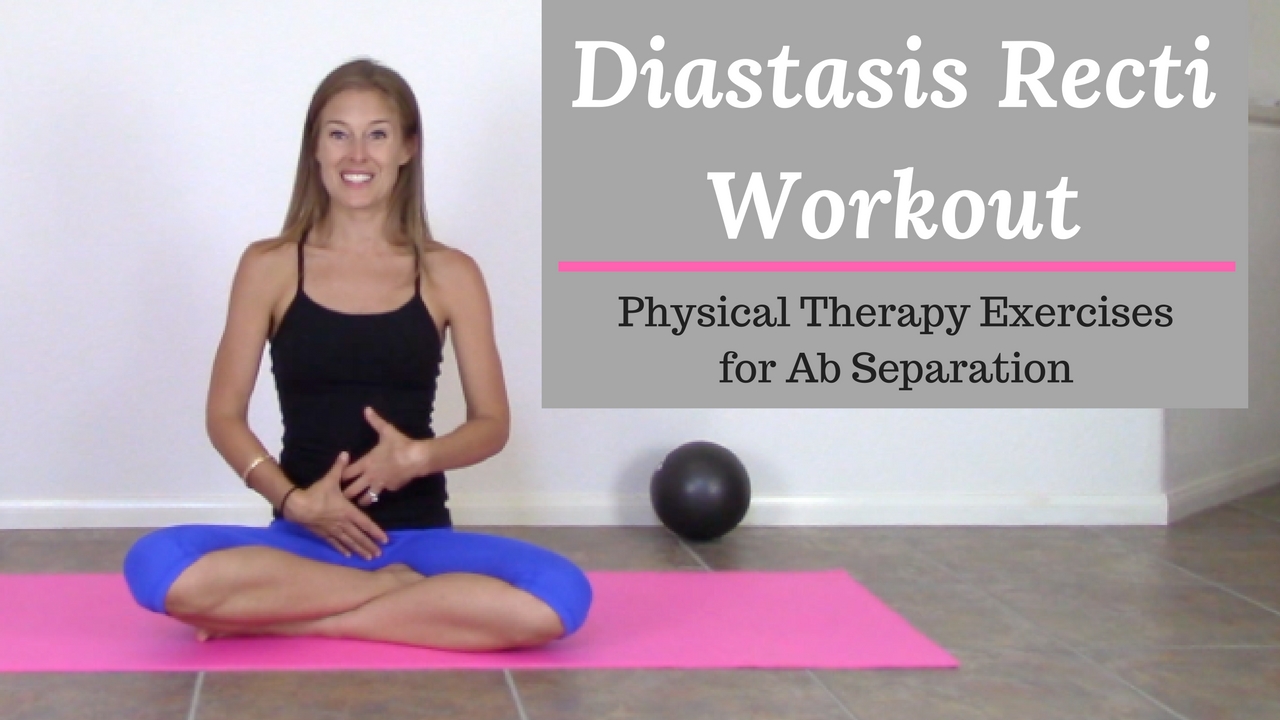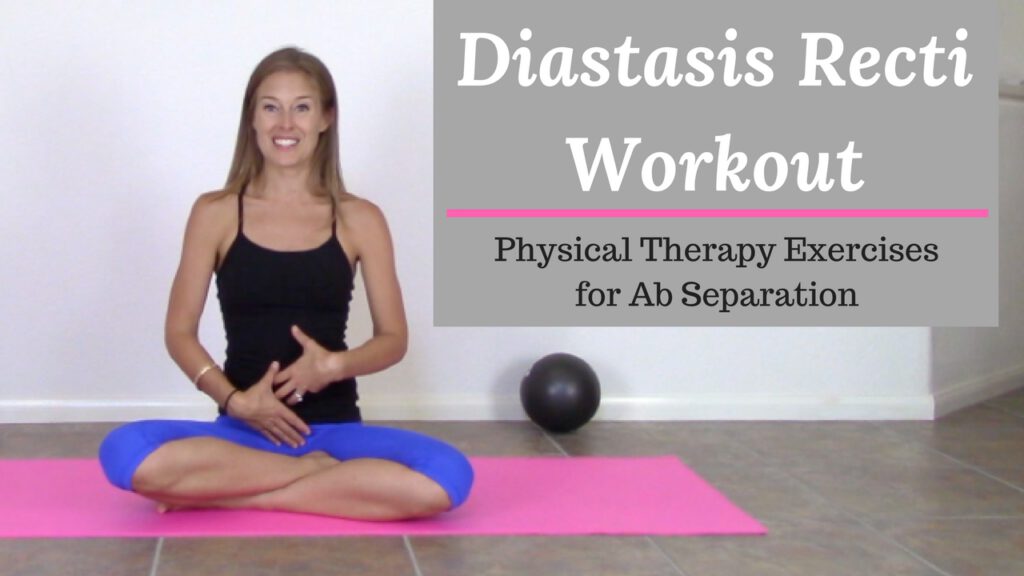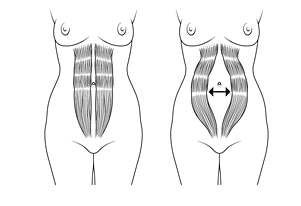Diastasis recti exercises are some of the most important things you can do when you find yourself with separated abdominal muscles.
The problem is that it can be so hard to find the best workout to do!
You either can’t find any information or you find so much conflicting advice that you just shake your head and don’t do anything.
I understand the frustration of diastasis recti, which is why I created this workout today specifically for those people suffering from it!
Let’s start from the beginning.
What is Diastasis Recti?
Diastasis recti occurs when the left and right sides of the rectus abdominus start to separate, causing what is commonly referred to as “separated abs”. It is created due to the stretching of the linea alba, which is a long band of tissue that connects the left and right sides of the abdominal muscles.
Basically, your abs pull apart and are unable to contract correctly due to this stretching.
Who Does Diastasis Recti Affect?
Diastasis recti (DR) is most common in women who are pregnant or who recently had a baby. This is because of the immense stretching that happens in the abdominal muscles during pregnancy. As the belly grows, the linea alba can become more stretched, causing the ab muscles to separate.
Studies have shown that between 35-62% of women have diastasis recti after giving birth (source). Some women are lucky enough to have the abdominal separation correct itself soon after birth.
For many others, DR is something they will need to work on correcting themselves, through things such as exercise and physical therapy.
While DR is most often associated with pregnancy, it can occur in anyone that experiences extreme stretching of the linea alba. Newborns have been diagnosed with DR due to an underdeveloped rectus abdominus, and men can have separated abs due to being overweight or obese.
What Are The Symptoms of Diastasis Recti?
While DR is sometimes described by doctors and medical professionals as “no big deal” or “normal” after a pregnancy, it can have serious side effects for those who have it.
Diastasis Recti symptoms include:
- Low back pain
- Pelvic floor weakness
- Incontinence
- Poor posture
- Bloating
- Decreased self-confidence (due to the infamous “belly pooch” with a DR)
- Muscle imbalances in the core and hips
These symptoms can have serious affects on the quality of life of those with DR.
Which is why an effective exercise program is so important!
What Diastasis Recti Exercises Should I Be Doing?
While this workout is meant for anyone with a DR, I’m going to address some additional issues that specifically apply to women after they give birth.
You can test yourself for a DR at any time after you give birth. If you are unsure if you have a DR, get my free video on how to test yourself for separated abs. Just click the image below to get the bonus video.
Please note: You won’t want to check yourself or do this test while you are pregnant, as your abdominal muscles are too stretched to get an accurate reading. If you are trying to avoid DR while pregnant, my advice would be to avoid planks and crunches and any exercise that overly strains your abdominal muscles. Save these for later :).
As a physical therapist and Pilates instructor, I’ve seen countless women over the past 15 years who have had babies. They all have one thing in common.
They want to be stronger and they don’t know exactly how to do that.
They do 100 crunches a day and wonder why they still have that belly pooch.
This is because crunches are actually the worst thing you can do for a diastasis recti! When the abs are already separated, they can’t contract properly to help you do a crunch. So when your body tries that “crunch” motion, the abs end up separating even more.
There is so much conflicting information about how to workout after pregnancy. Doctors don’t give us specific guidelines, and we are basically told to “do what feels good”.
Unfortunately, all of that leads to many women with longterm back pain, separated abs and pelvic floor issues, due to exercising wrong or starting exercise too soon after giving birth.
I have a three year old daughter and, despite my medical background, I didn’t completely understand DR or pelvic floor weakness after giving birth. I did “gentle” exercises at home for the first six weeks, and then returned to my normal activity, including sprints, Pilates, lifting weights and yoga.
I now have a bladder prolapse which I most likely made worse from returning to certain exercises too soon.
While it was my labor and birth that caused the prolapse, I believe by returning to crunches and plyometrics too soon after birth, I limited by body’s natural ability to heal in that important postpartum time.
My goal with this video is to help anyone with DR, and specifically those women who have recently given birth!
This Diastasis Recti Exercise Video is appropriate for anyone after giving birth or anyone who has been diagnosed with a DR or weak pelvic floor. It will review the proper way to strengthen your pelvic floor, including the always confusing Kegal exercise. It will then take you through exercises for your core, arms and legs, that will help you tone while making sure you don’t make your DR worse.
This workout is a great place to start if you are unsure of what exercises to be doing after giving birth! It can also be included with any other workout program you are doing. You don’t need to have recently given birth for this to be effective. Even if it’s been years after being diagnosed with a DR, this workout can help you find your core, strengthen your pelvic floor and move better.
The time after giving birth is a magical and precious time, and shouldn’t be affected by confusion and frustration over your body or exercise program! Be patient with yourself, honor your body and what it’s been through and have hope that you can feel your best again.
Don’t forget to get your bonus video on how to test yourself for a diastasis recti here!
Remember to always check with your doctor before starting a new exercise program, and stop immediately if you experience pain. These videos are not meant to diagnose or treat any medical condition.






